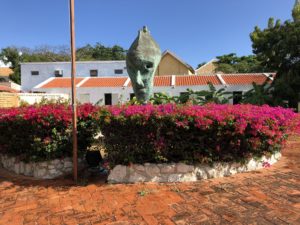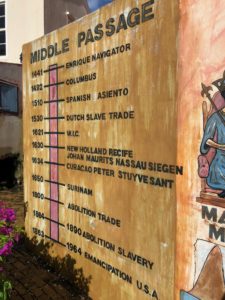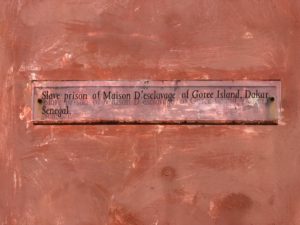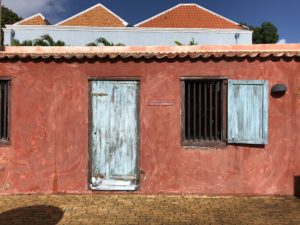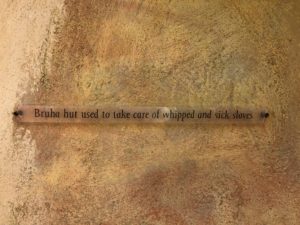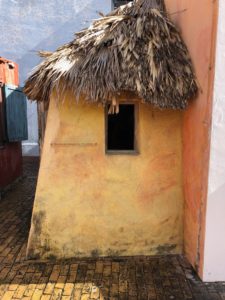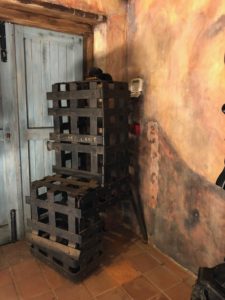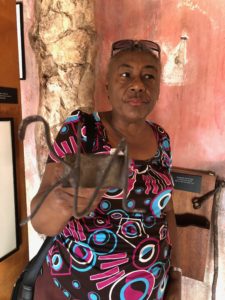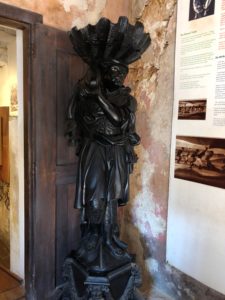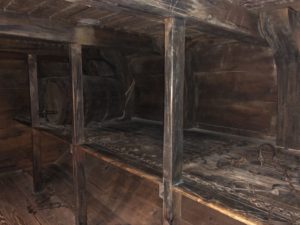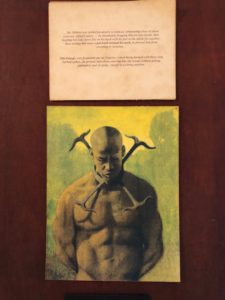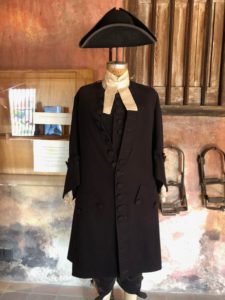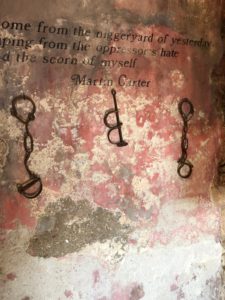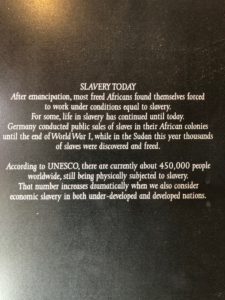Houses painted in colors washed with my blood; fragments of heart under the icy sun of mid day.
Charles Carrere
Little did we know that yesterday was one of four Curacao holidays, “Carnival Monday”. Streets were empty and everything, everything was closed. So this morning we hightailed over to the Kura Hulanda Slave Trade museum.
From the origin of man to West African empires…..
…… Through the middle passage to the Americas
Museum Kurá Hulanda is an anthropological museum that focuses on the predominant cultures of Curacao. It offers a world-class chronicle of the Origin of Man, the African slave trade, West African Empires, Pre-Colombian gold, Mesopotamian relics and Antillean art.
What a shocking experience. My exposure to the horrors of slavery are through the lens of an American experience. What happened on our soil. I was un-informed about slave trade which the Dutch used to profit from 500,000 human beings.
The Entrance courtyard
A Time Line of the Middle Passage
Once through the courtyard were a compound of buildings housing the exhibits. The buildings themselves, artifacts.
Slave prison of Maison D’esclavage of Goree Island, Dakar
Bruha (witches) hut used to take care of whipped and sick slaves
As we were departing, we were stopped by one of the employees, Yflen Florentina, she asked if we had seen certain items, some of which we had not. She grabbed us and took us on a whirlwind walk, talking all the time and providing incredible narrative that brought pieces of the collection into stark and vivid reality.
Here she holds a brand used to identify a human being as the property of a “master”.
Venice was a slave trading hub and the origin of the “Blackamoors“
The hold of a slave ship.
”. . . Mr. Ebbers was indeed peculiarly tyrannical, tormenting a boy of about fourteen, called Cadety, . . . by alternately flogging him for one month, then keeping him laid down flat on his back with his feet in the stocks for another than making him wear a pot-hook around his neck, to prevent him from escaping or sleeping . .”
According to Yflen, the Catholic church derived profit from the trade as well by insisting owners pay the church to grant priesthood to one slave who would then baptize the “savages” into the church. Here the robes of a slave priest.
These manacles were used to chain one arm to the opposite foot. Inscription reads –
“I come from the niggeryard of yesterday leaping from the oppressor’s hate and the scorn of myself.”
And it keeps on going (click to enlarge)
